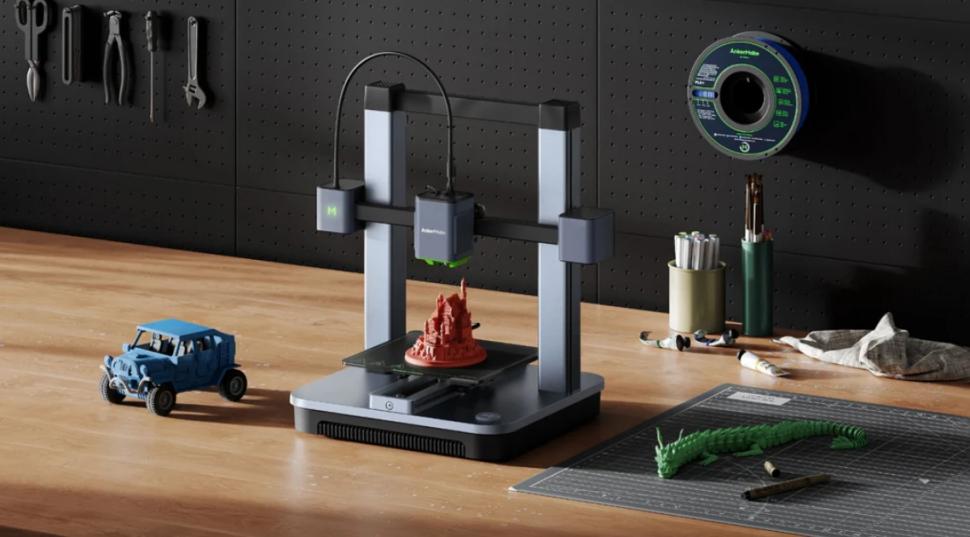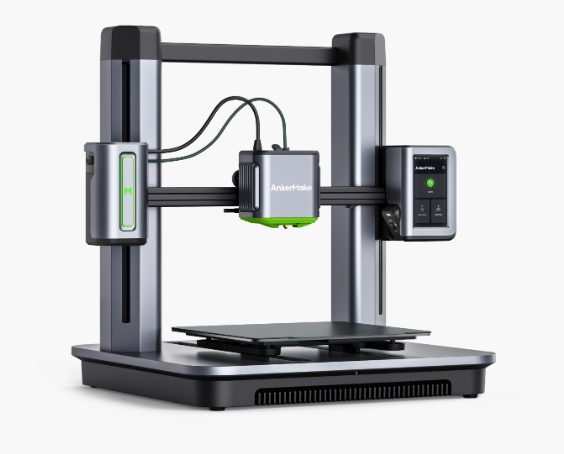Proper maintenance ensures your 3D printer performs efficiently and consistently delivers high-quality prints. Over time, wear and tear can affect components like the print bed, extruder, and moving parts, leading to errors or reduced accuracy. Regular care, including cleaning, calibration, and troubleshooting, minimizes these issues and extends the printer's lifespan. Whether you own an advanced model or the best 3D printer for beginners, proper upkeep is essential to maintaining performance. This guide covers essential maintenance practices, from inspecting and lubricating parts to solving common issues. Understanding how to keep your 3D printer in top condition will save you time, reduce costs, and improve your printing results.

Why Is Regular Maintenance Essential for 3D Printers?
Extending the Lifespan of Your 3D Printer
Routine maintenance significantly extends the lifespan of your 3D printer by reducing wear and preventing damage. Regular cleaning of components, such as the print bed and nozzle, ensures smooth operation and prevents material buildup. Inspecting belts, pulleys, and other moving parts helps identify potential issues before they escalate. Lubricating key areas reduces friction, ensuring longer-lasting components. By dedicating time to regular upkeep, you avoid costly repairs and replacements, allowing your printer to operate reliably for years. Consistent care is an investment that protects your machine and maintains its performance over time.
Ensuring Print Accuracy and Quality
A well-maintained 3D printer consistently delivers accurate and high-quality prints. Cleaning the print bed enhances material adhesion, reducing the likelihood of warped or failed prints. Calibrating the print bed and filament feed system ensures precise layering and smooth extrusion. Regular firmware updates improve compatibility and functionality, enhancing overall performance. Ignoring maintenance can lead to misaligned prints, uneven layers, and other issues that compromise quality. By prioritizing upkeep, you create an environment where your 3D printer performs optimally, ensuring every project meets your expectations.
Preventing Costly Repairs and Downtime
Neglecting maintenance increases the risk of component failures, leading to costly repairs and extended downtime. For example, filament jams or clogs in the nozzle can escalate if not addressed promptly, potentially damaging the extruder. Regular inspection helps identify worn parts, such as belts or bearings, allowing for timely replacements. Cleaning and lubrication also reduce strain on mechanical components, preventing breakdowns. By proactively maintaining your 3D printer, you avoid disruptions to your workflow and ensure uninterrupted operation. Preventative care is far more cost-effective than emergency repairs, making it a smart strategy for long-term reliability.
How Do You Clean and Inspect Your 3D Printer?
Cleaning the Print Bed and Extruder
Keeping the print bed clean ensures proper adhesion, preventing prints from warping or failing. Use isopropyl alcohol to remove dust, oils, and leftover material from the bed. The extruder and nozzle also require regular cleaning to prevent clogs. Use a brass brush or cleaning filament to remove debris and material buildup. Heated nozzles are easier to clean, as residual filament softens. For stubborn clogs, consider using a nozzle cleaning needle. By maintaining these key areas, you improve print quality and reduce the likelihood of failed prints, ensuring consistent performance from your 3D printer.
Inspecting Moving Parts and Belts
Inspecting your 3D printer’s moving parts, such as belts, pulleys, and rods, helps prevent mechanical issues. Loose belts can cause misaligned layers or uneven prints. Tighten belts to maintain proper tension and ensure smooth movement. Check for signs of wear on bearings and pulleys, replacing them as needed to avoid sudden failures. Regularly wipe rods and rails to remove dust and debris, as buildup can impede motion. Addressing these issues during routine inspections minimizes wear and ensures accurate, reliable performance. Keeping moving parts in optimal condition is key to extending your printer’s lifespan.
Maintaining Proper Lubrication
Lubrication reduces friction and ensures smooth movement of mechanical components. Apply a small amount of lubricant, such as PTFE grease, to rods, bearings, and lead screws. Avoid over-lubricating, as excess grease can attract dust and debris. Clean components before applying lubricant to prevent contaminating the system. Regular lubrication prevents strain on motors and reduces wear on moving parts, contributing to consistent performance. By integrating this simple step into your maintenance routine, you enhance the durability and efficiency of your 3D printer.
What Are the Best Practices for Calibration?
Adjusting the Print Bed Leveling
Proper print bed leveling ensures the first layer adheres evenly, reducing the risk of print failure. Use the printer’s leveling system or manual adjustment screws to align the bed. Place a sheet of paper between the nozzle and the bed, adjusting until there’s slight resistance when moving the paper. Repeat this process at multiple points on the bed. Some printers feature automatic bed leveling, simplifying the process. Regular calibration ensures optimal print quality and prevents issues like uneven layers or warping. A well-leveled bed is fundamental for achieving reliable results.

Checking and Updating Firmware
Firmware updates enhance printer performance by fixing bugs, improving compatibility, and adding new features. Regularly check the manufacturer’s website for updates specific to your printer model. Before updating, back up your printer’s current settings. Follow the manufacturer’s instructions to avoid errors during installation. Outdated firmware can cause inconsistent performance and limit functionality. By keeping firmware up to date, you ensure your printer operates efficiently and supports the latest materials and features.
Calibrating the Filament Feed System
The filament feed system ensures smooth and consistent extrusion. To calibrate, measure the filament’s movement through the extruder, verifying it matches the printer’s settings. Adjust the extruder’s steps-per-millimeter value in the firmware if necessary. Test with a small print to confirm accurate extrusion. Proper calibration prevents issues like under-extrusion, which can weaken prints, or over-extrusion, which creates blobs and uneven surfaces. Regularly checking and adjusting the feed system ensures consistent material flow and improves overall print quality.
How to Troubleshoot Common 3D Printer Issues?
Resolving Print Adhesion Problems
Print adhesion problems often occur when the first layer fails to stick to the bed. Ensure the print bed is clean and level, and consider using adhesive aids like glue sticks or painter’s tape. Adjust the bed temperature or first-layer speed to improve adhesion. Increasing nozzle temperature slightly can also help filament adhere better.
For stubborn issues, try changing the filament or bed surface. By addressing adhesion problems proactively, you reduce print failures and improve success rates.
Fixing Filament Jams and Clogs
Filament jams and clogs in the nozzle disrupt printing and can damage components. To fix a jam, unload the filament and inspect the extruder for blockages. Clear minor clogs using a cleaning filament or nozzle cleaning needle. Severe clogs may require removing and soaking the nozzle in a cleaning solution. Prevent clogs by using high-quality filament and storing it in a dry environment. Regularly cleaning the nozzle and extruder minimizes the risk of jams, ensuring smooth operation.
Identifying and Correcting Layer Shifts
Layer shifts result from loose belts, misaligned rods, or mechanical interference. Check belt tension and tighten if necessary to eliminate slack. Inspect the frame and rods for stability, ensuring all components are properly secured. If the issue persists, reduce print speed to decrease strain on the printer. Layer shifts can also result from software errors, so verify the slicing settings and firmware configuration. Addressing these factors prevents misalignment and ensures high-quality, accurate prints.
Conclusion
Maintaining your 3D printer is essential for ensuring reliable performance and extending its lifespan. Regular cleaning, lubrication, and calibration keep components in optimal condition and prevent costly repairs. By following best practices for inspection and troubleshooting, you minimize downtime and improve print quality. Investing time in maintenance not only enhances your printer’s efficiency but also ensures consistent, successful prints. With proper care, your 3D printer remains a powerful tool for creativity and innovation. Incorporate these tips into your routine and enjoy seamless, high-quality printing for years to come.
